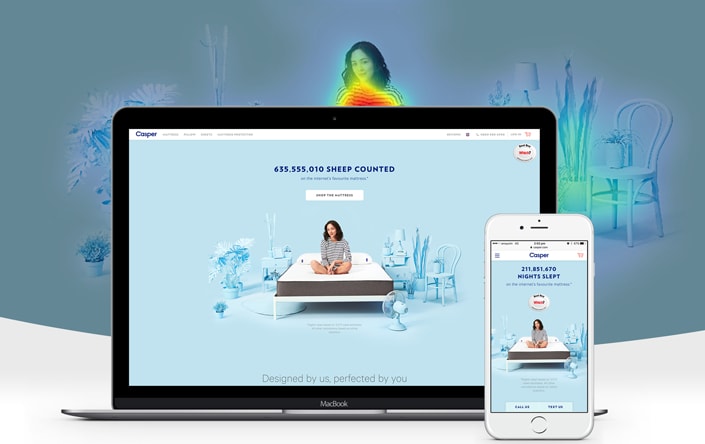Having copy that resonates with your audience and provokes them to continue through your sales funnel requires not only an understanding of your target audience and what they need, but also behavioural psychology.
Buying is not only a practical process it is also an emotional one, and sometimes the missing link between converting your traffic into paying customers is all in the psychology.
From a young age our minds are programmed to react to certain things, colours, words or signs and manipulating these factors into your content can help to drastically improve conversion rates.
Here are four proven techniques to help harness the power of your copy:
Psychology Hack 1: The Serial Position Effect
Your brain is subconsciously programmed to prioritise both the first and last bits of information that you read, especially when it comes to lists or bullet points.
Knowing this can allow you to strategically place particular features or information at either the start or end of your post, in order to receive maximum engagement. For example, the highlights or top features of your product or service should be put in the first and last sentences or bullet points.
This theory can also be used when positioning certain call to actions or buttons around your sales page. People are more likely to look towards the top left hand side of the screen first so definitely use this space as a priority.
Strategically writing certain copy at the start and ends of your sales or landing page can also help your customers to instantly understand and remember the strongest points of your product or service.
Psychology Hack 2: The Postscript (PS.) Effect
Including a PS. or postscript at the end of your sales page or pitch has been shown to instantly attract readers attention and increase conversions.
This is partly due to the Serial Position Effect theory, but also because including a PS. is somewhat unexpected and helps to catch your audiences eye.
Use your PS. to showcase your most important call to action and to remind your customers of important features or information that they may need.
This strategy works really well on sales emails, at the end of pitches and in case studies, but feel free to experiment with it in other areas as well.
Psychology Hack 3: The Illusory Truth Effect
Our brains are wired to associate repetition as the truth. This means that the more an idea is shared or stated, the more truthful it appears and the more trusted it becomes.
The best example of the Illusory Truth Effect in action is through social proof- the more people who comment, talk about or share a product or information, the more desire is created to have it.
While most businesses already use social proof to help build trust and brand awareness, the Illusory Truth effect can be taken one step further by reiterating strong points through your content.
For example, repeating that your service is “a favourite among B2B marketers” or “the most popular service in all of Melbourne” can help to instantly establish your credibility and encourage trust.
While you definitely don’t want to make false claims, stating a positive point about your business and then cementing it in through your copy can influence customers to purchase.
Psychology Hack 4: The Justification Effect
When you provide a reason as to why customers need to purchase your product or service, conversion rates automatically increase.
This theory was tested by psychologist, Robert Cialdini. He conducted an experiment where he asked subjects to use the following three statements in order to jump the line to the photocopier-
1. Excuse me, I have five pages. May I use the Xerox Machine?
2. Excuse me, I have five pages. May I use the Xerox machine because I am in a rush?
3. Excuse me, I have five pages. May I use the Xerox machine because I have to make some copies?
The success rate of the first statement was only 60 percent, whereas the success rate of the second statement was a whopping 94 percent. The third statement, which provided a very weak justification also had a 94 percent success rate.
From this experiment, Cialdini proved that whether the justification is weak or strong, it seemed to have an effect on persuading people. The same theory was then applied to a sales environment and it was found that the key word was really “because”.
When copy included “because” and evoked an emotional response of some kind, customers were far more likely to purchase or sign up as they felt justified to do so.
Aim to create a “because” statement that taps into what your customers truly want, and then experiment to find the perfect one for your brand.
There are always interesting and psychologically proven ways to boost the effectiveness of your copy. Why not try some of these strategies today and see how they can help boost your conversion rates?




Hey!
It looks like you're browsing in . Would you like to switch over to the website?